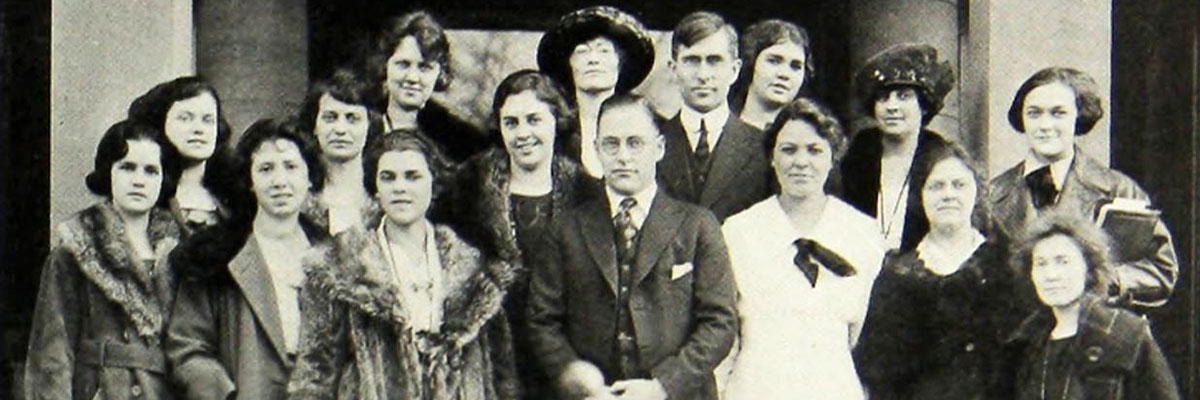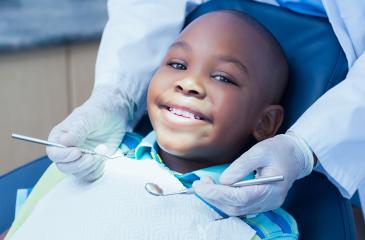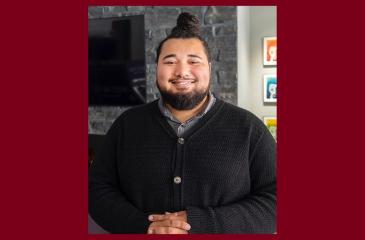
If you are fortunate enough to receive regular dental care, you are probably well acquainted with your dental hygienist. What you may be less familiar with is the fantastic 100-year history of dental hygiene education here at the University of Minnesota.
Alfred Fones, a Pennsylvania dentist who trained the first dental hygienist, envisioned the role as “the channel through which dentistry’s knowledge of mouth hygiene is to be disseminated.” In other words, these women (and by law, they were all women until 1965), would work to prevent dental disease by teaching children how to properly clean their teeth. And, in fact, when the first class of hygienists he trained was deployed in Pennsylvania’s public schools, the incidence of dental caries declined by 75%.
The young women gathered in this photograph from 1922 were Midwestern pioneers. Among them are the three women who were the first Graduate Dental Hygienists of the University of Minnesota’s then “School of Dental Nurses.” In the 100 succeeding years of the program, it would go through seven name changes but—remarkably—only five program directors.
Approved by the Board of Regents in July 1919 and established by September 1919, the school was only the fourth in the United States and the second to be housed in a dental school setting. From the beginning, the University embraced a higher standard and a longer period of education than almost any other in the country. The two-year program provided a thorough “background of scientific and cultural subjects” without which it was felt the students would be “mere technicians and quite unsafe to turn loose on the public.” The primary professional mission of offering preventative care for children and teaching oral hygiene in elementary schools is reflected in the laws of the time that permitted dental hygienists to “remove lime deposits, accretions and stains from exposed surfaces of the teeth, and administer gas, ether and anesthesia, as applied to dentistry, but shall not perform any other operation on the teeth or tissues of the mouth.”
The young women in the photo from 1922 were by no means the only pioneers, as the University’s dental hygiene program has continued to make significant advances in education, research, and practice:
- 1919-1968 The only dental hygiene program in Minnesota.
- 1950 Dental hygienists required to be licensed to practice.
- 1970s Minnesota dental hygiene profession became a leader in the nation in expanding the scope of practice for dental hygienists.
- 1990 Dental hygiene program became a baccalaureate degree program.
- 2008 Master of Science in Dental Hygiene program established to prepare students for academic, research, and health industry careers.
- 2014 Dental therapy student cohort also enrolled in baccalaureate dental hygiene program to create a dually licensed oral health care provider: the dental hygienist/therapist.
Dental hygienists are the only healthcare practitioners whose primary role is prevention of disease and whose secondary role is education. They spend an unmatched 60 minutes with each healthy patient—an extraordinary opportunity to deliver preventative care, provide education, identify health issues, and reinforce care ideas from other health providers. They offer an easily accessible point of entry into the healthcare system, with the additional benefit of being able to bring care into places outside of a dental office: schools, community centers, health clinics, or long-term care facilities.
For over 100 years, dental hygienists have been thought leaders in what we now know to be the future of healthcare—keeping patients well, rather than just treating them when they are sick. They are also a wonderful example of how critical teamwork is in how we reimagine interdisciplinary healthcare, and how important it is that we become aware of the potential collaborators around us. Please join me in congratulating them on a century of positive impact on Minnesota’s health!
Thank you,
Jakub Tolar, MD, PhD
Vice President for Clinical Affairs



